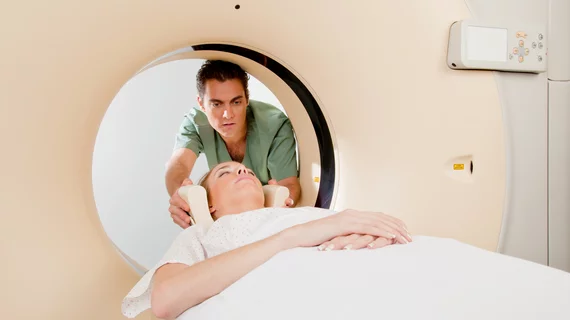‘There is no current role for CT’ in the diagnosis of coronavirus, radiologists assert
Consensus seems to be building against using computed tomography to diagnose the novel coronavirus, with another major society urging physicians away from the modality as part of their pandemic response.
The Royal College of Radiology issued a statement on Thursday, asserting that “there is no current role for CT in the diagnostic assessment of patients with suspected coronavirus infection in the U.K.” Its declaration arrived the day after the American College of Radiology also warned physicians to use CT sparingly, and never as a first-line tool against COVID-19.
“We do not believe that current evidence demonstrates a clear benefit in producing a definitive and positive management change on the basis of CT information,” the London-based RCR wrote March 12.
The U.K. group has received a “number of queries” from its more than 11,000 members as the outbreak has intensified in recent weeks. And other countries with a greater disease prevalence and shortage of viral testing kits have used CT as a diagnostic tool, officials noted. (The United Kingdom has only confirmed about 1,500 cases, far short of the nearly 28,000 seen in Italy.)
Mirroring the ACR’s concerns, however, the Royal College noted that COVID-19 imaging findings are generally nonspecific, overlapping with other viral chest infections such as influenza or SARS. Radiologists should familiarize themselves with the appearance of coronavirus in CT images, as some patients with the disease, but no symptoms, may undergo testing for other reasons.
“The CT appearances alone will not obviate the need for viral testing and should not be viewed as equivalent to or replacing this,” the RCR added.
Officials also noted that CT does have a well-established role in assessing patients presenting with severe respiratory distress. That need will remain unchanged during the pandemic, but “we do not believe that patients with known or suspected coronavirus infection should be imaged any differently,” the guidance noted. “The CT request should be based on clinical need and subsequent likely change to the clinical management plan.”
The Royal College also emphasized the importance of “meticulously” following infection control policies going forward and emphasized that its guidance could change in the coming days and weeks as “the situation is changing rapidly.”
Meanwhile, a group of physicians from the British Society of Thoracic Imaging last week said CT should have a “limited role” in diagnosing COVID-19. However, if testing labs continue to experience days-long delays or testing becomes unavailable, “the implementation of CT imaging as a frontline diagnostic tool, as rolled-out in China, requires urgent discussion,” the group wrote March 12 in the BMJ.

